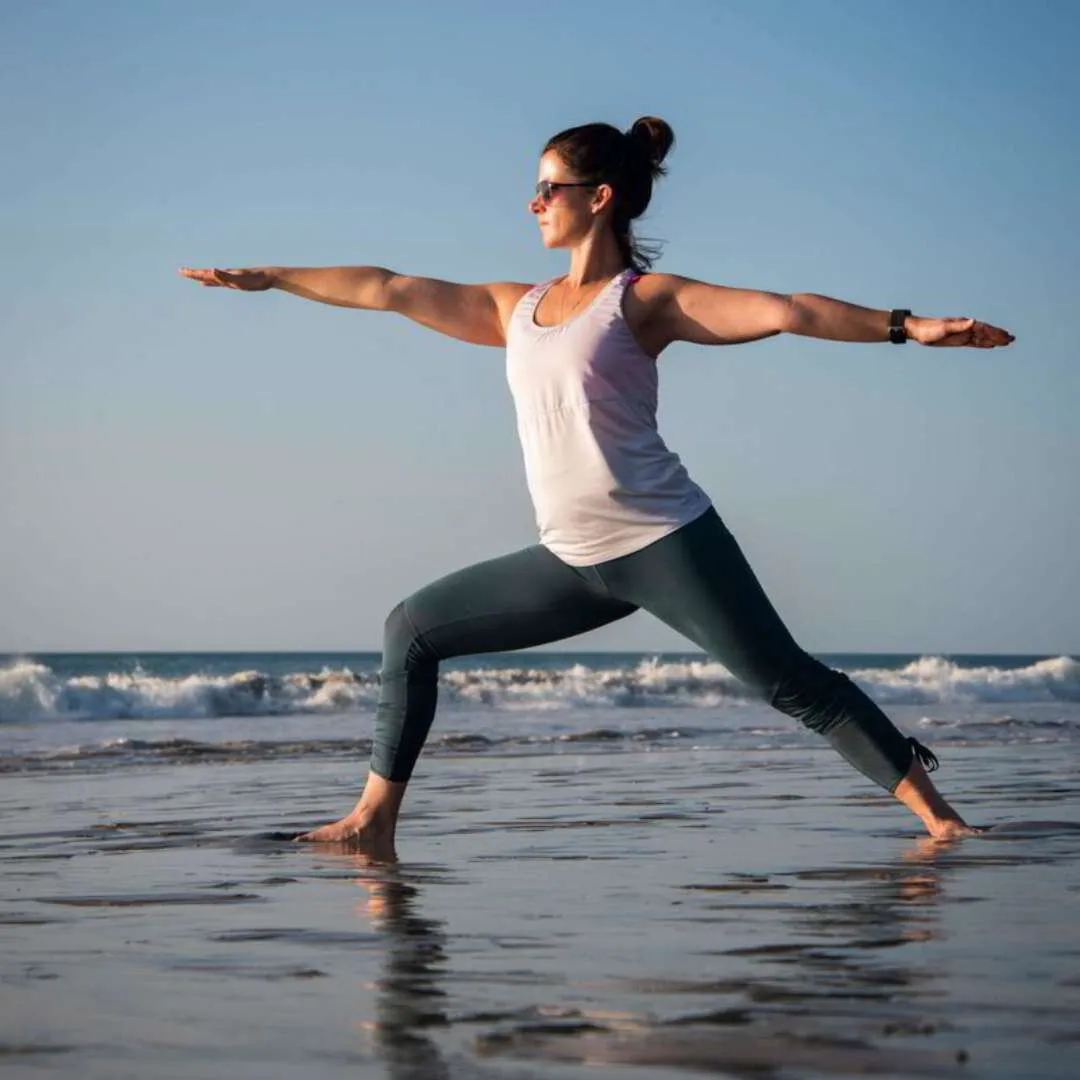We’ve been talking about self care a lot this month.
One of the reasons it is such an easy topic is that we all absolutely need it yet it can mean something different to everyone giving us a wide range for discussion.
However, because there is no true definition of self care, it makes it easy to use as an excuse or a crutch. When we define it by other people’s standards it can also seem unattainable or unrealistic.
Ugh, I need a glass of wine….#selfcare.
I need to self care my way to the spa…#treatyoself #selfcare.
Before it became hashtag-able though self care simply meant to take care of yourself. If we put the marketing and the sales pitch aside, I would argue that true self care lives in the small decisions we make every day. The good choices that cumulatively lead us to a better version of ourselves. The things we can realistically and easily do on a regular basis to make ourselves healthy and happy.
Here are 5 small but mighty ways you can take care of yourself that require very little time and cost nothing.
Breathe
There is nothing more accessible than breath. Think about it. We breathe through pain. We teach ourselves to breathe through labour. It is the foundation of movement practices like yoga and pilates. It is how we release tension, express relief and calm ourselves by nature. It makes sense that if we apply breath more regularly throughout our day we could reach physical and mental calm with greater ease.
It can also be argued that breathing can make us more resilient to stress.
Heart rate variability (HRV) is the variation in time between each beat. It is largely influenced by our autonomic nervous system which is divided into our fight-or-flight response (sympathetic nervous system) or our relaxation response (parasympathetic nervous system). When someone is predominantly influenced by their fight-or-flight system because of negative stress, they will exhibit a lower HRV which can be associated with a higher rate of cardiovascular disease and increased mortality rates.
A study in the Journal of Advances in Physiology Education looked at the effects of a yogic breath practice known as alternate nose breathing to determine its effects on HRV. When undergraduate students practiced ANB for one to two minutes, they universally experienced an increase in HRV.
In other words, 60 seconds of breath can significantly stimulate your relaxation response during times of stress.
If you would like to learn how to use ANB, check out our instructional YouTube video.
Gratitude
There was a time when I would have told you I was most consistent about my movement habits but lately that award goes to gratitude. Every morning before my children wake up I write down 5 things I am grateful for. They are often as simple as someone smiling at me on the street, a kind comment from a colleague or friend or a cozy tea. The point is that by spending my day looking for things to be grateful for, it becomes hard to be negative.
Gratitude is such a simple yet effective practice that it has been linked to health benefits including improved cardiovascular health, improved sleep and decreased pain. It has not only been proven to improve people’s self reports of happiness but also decrease depression.
In 2003, a study by Emmons and McCullough found that students who consistently wrote in a gratitude journal for 10 weeks, versus those who journalled about events and hassles, reported fewer physical symptoms including headaches, shortness of breath, nausea and muscle pain.
Bottom line, if you want to feel better in both your body and mind, exploring gratitude is a great place to start.
Hydrate
Perhaps the simplest yet most underused practice in health is just to hydrate.
It is an unfortunate fact that we all start to dehydrate after the ripe old age of 20. Considering that our bodies are 60% water with key organs such as the brain and heart being 73% water, staying properly hydrated is essential to good health.
Water is good for us in countless ways. It improves our digestion, it contributes to healthy skin and it supports healthy muscles. A well hydrated individual typically experiences less hunger and as a result is a healthier body weight. Water can also lessen the frequency of headaches, improve joint stiffness and can lead to better athletic performance.
The average adult needs to minimally drink half their body weight in ounces of body. This increases with activity, environment, consumption of diuretics (medication, caffeine and alcohol), breastfeeding and exercise and can sometimes mean drinking 2-3 L per day.
The best way to know if you are well hydrated is to check your urine. If it is a light straw colour you are likely getting enough water. If you are seeing a darker or brighter colour (with the exception of first thing in the morning or after you take a vitamin or medication) or you feel thirsty, chances are you are already somewhat dehydrated.
Bottom line, just drink the damn water.
Move
I understand at this point you might be thinking like this is the same old list or healthy habits that we always preach. You would be right. The point is they don’t need to be difficult and can be added as bite sized chunks throughout your day to make self care more accessible. Movement is no different.
In our client population, I usually get the biggest objections to movement. People automatically assume I am going to prescribe 60 minutes of cardio or weights at a gym but that is rarely part of the treatment plan. Guess why? You won’t do it.
Studies have shown that consistently elevating your heart rate, even over short bouts, can have massive impact on your mental state, cardiovascular health, strength, blood flow and in preventing disease. Most often the exercise we prescribe is the exercise we know you will actually do because it fits in your day and can easily be done anywhere.
When I worked at McMaster university, I had the distinct pleasure of working with Dr. Marty Gibala, chair of the Department or Kinesiology and founder of the one-minute workout. Marty is an expert in the physiology of human performance and has done much of his research around interval training. While he is most recognized for working with elite athletes, he will be the first to let you know that simply picking up the pace for a few seconds, even if you are just walking, can significantly improve your fitness and decrease disease markers.
Bottom line strike up a kitchen dance party, speed up to catch that bus or enjoy a backyard game of tag. Science says it will help both your body and your mind.
Get Outside
This might be an unpopular suggestion mid-February but my last recommendation for simple and easy to implement self-care is simply to get outside, otherwise known as forest bathing.
The impact of calming outdoor spaces, specifically those thick with trees and vegetation has had such a profound impact on measures of health like blood pressure and heart rate, that there is now an entire branch of medicine known as forest medicine dedicated to the study of being outdoors.
Being outdoors promotes the relaxation effect of the parasympathetic system, improves mood and decreases the impact of stress hormones making us more resilient humans. If this sounds a lot like the argument like breath it is because they both impact heart rate variability. You could also argue that it is easier to breath in an environment that is less stimulating, less stressful and that promotes movement.
Being a Torontonian, I understand that dense forests aren’t always easy to come by. That being said I think the principles still apply. Take your lunch in the park, enjoy a walk along the lake or simply escape your desk for 5 minutes to get outside and suspect you will feel more focused, have better energy and enjoy a more positive and calm disposition.
If lavish spa days or pizza and wine are your go tos for self care, I strongly encourage you to cherish them fully. Understand however that one grande gesture doesn’t create consistent care. Building a daily practice of self care builds the strong foundation needed for long term health and wellness.
True self care and self love lives in the cracks. It is choosing yourself in every small decision and being kind to yourself when you don’t.
+Melanie Stevens Sutherland, Clinic Director & Senior Orthopaedic and Pelvic Floor Physiotherapist
Melanie is a graduate of McMaster University and brings 20+ years of experience as a senior physiotherapist to Body Co. She has enjoyed a long tenure working with active populations at prestigious sport medicine clinics. Past clients include Provincial, National and Olympic level athletes as well as members of the National Football League, the Canadian Football League, the Ontario Hockey League, the American Hockey League, the National Lacrosse League and Major League Soccer.
Following the birth of her own children, Melanie developed a strong interest in women’s health. She has taken specialized courses in pelvic floor physiotherapy and women’s nutrition. She is passionate about helping women find strength and confidence in their post-natal bodies following pregnancy and delivery.
If you have enjoyed this blog and would like to learn more about health and wellness from our team of expert practitioners, follow us on Facebook and Instagram.


